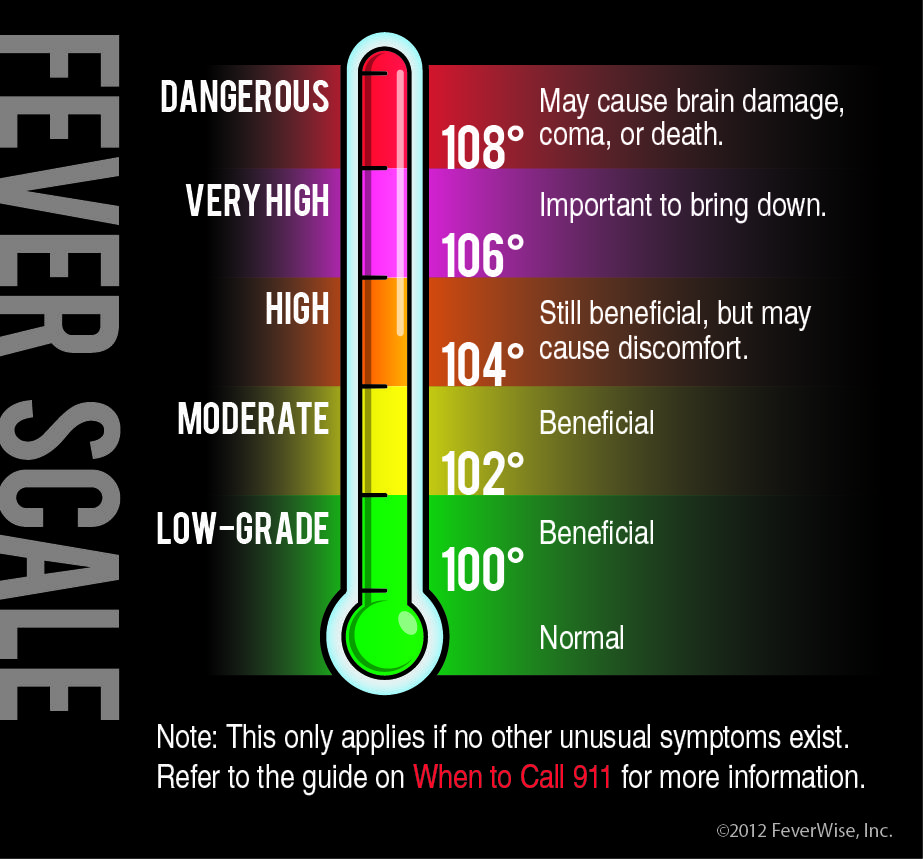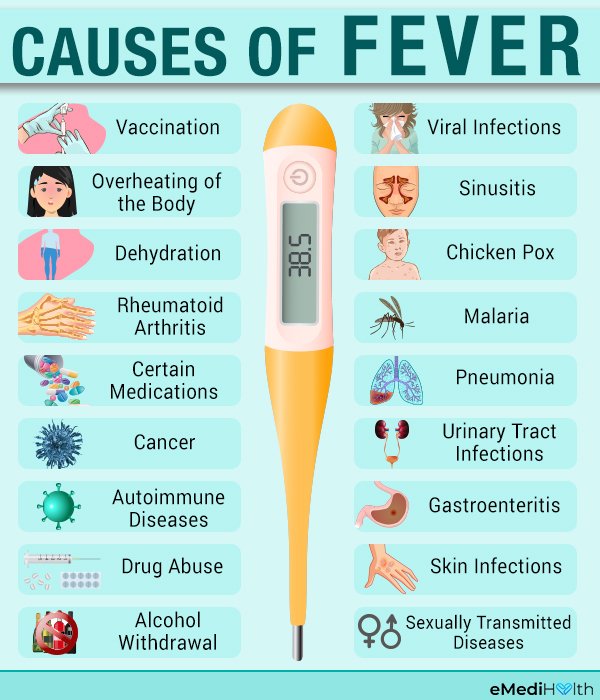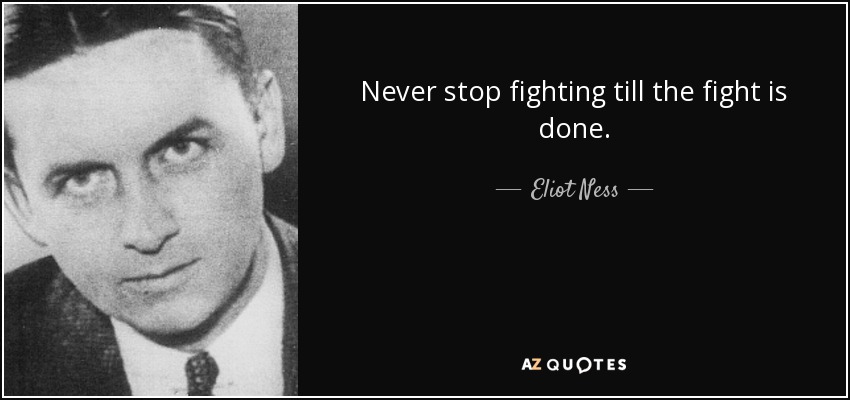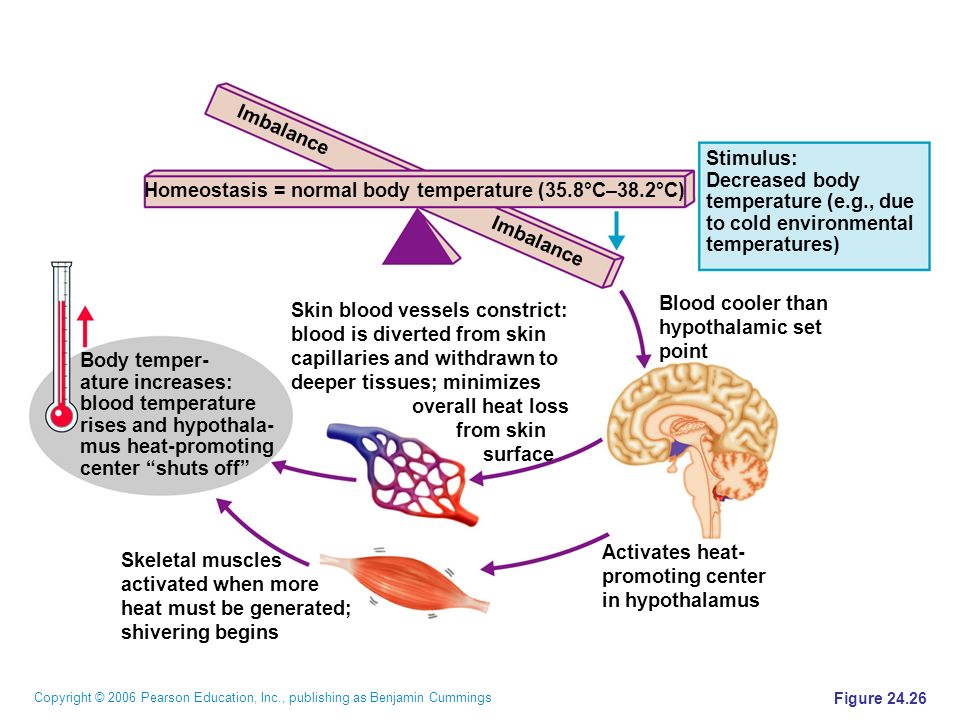What is considered a dangerously high fever. Dangerous Fever Levels: When to Seek Medical Attention for High Temperature
How high of a fever is considered dangerous for adults. What are the symptoms of a high-grade fever. When should you seek medical help for a fever. What causes dangerously high fevers. How to treat different levels of fever.
Understanding Fever: What Constitutes an Elevated Body Temperature?
A fever occurs when the body’s temperature rises above its normal range. While the average body temperature is typically considered to be 98.6°F (37°C), a slight variation is normal. Generally, a temperature above 100.4°F (38°C) is classified as a fever.
Are all fevers cause for concern? Not necessarily. Low-grade fevers, which fall between 100.4°F and 102.2°F (38°C to 39°C), are often the body’s natural response to fighting off infections. However, higher temperatures may indicate a more serious condition that requires medical attention.
Types of Fevers
- Low-grade fever: 100.4°F to 102.2°F (38°C to 39°C)
- Moderate-grade fever: 102.2°F to 104°F (39°C to 40°C)
- High-grade fever: Above 104°F (40°C)
- Hyperpyrexia: Above 106.7°F (41.5°C) – extremely dangerous
Causes of Dangerously High Fevers: What Triggers Extreme Body Temperature?
Fevers are typically the body’s defense mechanism against invading pathogens. However, dangerously high fevers can occur due to various factors. Understanding these causes can help in recognizing potential health risks and seeking timely medical intervention.

Common Causes of High Fevers
- Severe infections (viral, bacterial, or fungal)
- Certain medications or drug reactions
- Autoimmune disorders
- Heat exhaustion or heatstroke
- Thyroid storm (severe hyperthyroidism)
- Intracranial hemorrhage
- Serotonin syndrome
- Sepsis
- Kawasaki syndrome
Do certain medical conditions increase the risk of developing dangerously high fevers? Yes, individuals with compromised immune systems, chronic illnesses, or those undergoing specific treatments may be more susceptible to severe fevers. It’s crucial for these individuals to monitor their temperature closely and consult healthcare providers promptly if they experience any significant elevation.
Recognizing Symptoms: How to Identify a Potentially Dangerous Fever
Identifying the symptoms associated with different levels of fever can help determine when medical attention is necessary. While low-grade fevers may cause mild discomfort, high-grade fevers can lead to more severe symptoms that require immediate intervention.

Symptoms of Low-Grade Fever (100.4°F – 102.2°F)
- Mild chills
- Slight sweating
- Headache
- Thirst
- Reduced appetite
- Feeling warm to the touch
- Fatigue
Symptoms of High-Grade Fever (Above 104°F)
- Severe chills and shivering
- Profuse sweating
- Intense muscle aches
- Extreme weakness
- Nausea and vomiting
- Confusion or delirium
- Rapid heart rate
- Shortness of breath
Can high fevers cause long-term complications if left untreated? Prolonged high fevers can lead to serious health issues, including dehydration, organ damage, and in extreme cases, brain damage. This underscores the importance of seeking medical care when experiencing persistent high temperatures or severe symptoms.
Dangerous Fever Levels in Adults: When Should You Be Concerned?
For adults, determining when a fever becomes dangerous involves considering both the temperature and accompanying symptoms. While the body can generally tolerate moderate fevers, extremely high temperatures pose significant risks.
Fever Danger Zones for Adults
- 103°F – 104°F (39.4°C – 40°C): Seek medical advice, especially if persistent
- Above 104°F (40°C): Requires immediate medical attention
- Above 106.1°F (41.2°C): Medical emergency – can lead to severe complications
Is there a specific temperature that always indicates a medical emergency? While temperatures above 106.1°F (41.2°C) are considered extremely dangerous and require immediate medical intervention, it’s important to note that even lower temperatures can be concerning if accompanied by severe symptoms or if they persist despite treatment.

Treatment Approaches: Managing Different Levels of Fever
The approach to treating fevers varies depending on the severity and underlying cause. While mild fevers often resolve on their own, higher temperatures may require medical intervention.
Managing Low-Grade Fevers
- Rest and hydration
- Over-the-counter fever reducers (acetaminophen or ibuprofen)
- Cool compresses
- Lightweight clothing and comfortable room temperature
Treating High-Grade Fevers
- Immediate medical evaluation
- Intravenous fluids for dehydration
- Prescription medications to address underlying causes
- Cooling measures in severe cases
- Monitoring of vital signs and potential complications
Should you try to break a fever or let it run its course? For low-grade fevers, allowing the body to fight the infection naturally can be beneficial. However, for high-grade fevers or those accompanied by severe symptoms, medical intervention is crucial to prevent potential complications.
Fever in Special Populations: Considerations for Different Age Groups
The approach to fever management varies across different age groups, with particular attention needed for infants, young children, and the elderly. Each group has unique considerations and thresholds for when a fever becomes concerning.

Fever in Infants (0-3 months)
- Any fever (rectal temperature above 100.4°F or 38°C) requires immediate medical attention
- Higher risk of serious infections
- No fever-reducing medications without doctor’s approval
Fever in Children (3 months to 3 years)
- Fever above 102.2°F (39°C) should be evaluated by a healthcare provider
- Monitor for signs of dehydration and behavior changes
- Use age-appropriate fever reducers as directed
Fever in Older Adults (65+)
- May not develop high fevers even with serious infections
- Any fever above 101°F (38.3°C) warrants medical evaluation
- Higher risk of complications from fever
Why do infants and elderly individuals require special attention when it comes to fevers? These age groups have less robust immune systems and are more susceptible to serious complications from infections. Additionally, their bodies may not regulate temperature as effectively, making them more vulnerable to the effects of high fevers.
When to Seek Medical Help: Guidelines for Fever-Related Healthcare Visits
Knowing when to consult a healthcare provider about a fever can be crucial in preventing complications and ensuring proper treatment. While not all fevers require medical attention, certain situations call for professional evaluation.

Seek Immediate Medical Care If:
- Temperature exceeds 103°F (39.4°C) in adults
- Fever persists for more than three days
- Fever is accompanied by severe headache, stiff neck, or rash
- Signs of dehydration are present (dark urine, dry mouth, reduced urination)
- There’s confusion, difficulty breathing, or chest pain
- You have a weakened immune system or chronic medical condition
How quickly should you seek medical attention for a high fever? For temperatures above 104°F (40°C) or if severe symptoms are present, immediate medical care is necessary. Don’t wait to see if the fever will break on its own in these cases.
Prevention and Home Care: Managing Fevers and Reducing Risk
While not all fevers can be prevented, certain measures can help reduce the risk of developing high fevers and manage symptoms effectively at home. Proper self-care and preventive strategies play a crucial role in fever management.
Fever Prevention Strategies
- Practice good hygiene, including regular handwashing
- Stay up-to-date with vaccinations
- Maintain a healthy lifestyle to support immune function
- Avoid close contact with individuals who are ill
- Use insect repellent in areas with mosquito-borne illnesses
Home Care for Fevers
- Rest and avoid overexertion
- Stay hydrated with water, clear broths, or electrolyte solutions
- Use a cool, damp cloth on the forehead or wrists
- Dress in lightweight, breathable clothing
- Maintain a comfortable room temperature
- Take over-the-counter fever reducers as directed
Can certain lifestyle changes help prevent frequent fevers? Yes, maintaining a balanced diet, getting regular exercise, managing stress, and ensuring adequate sleep can all contribute to a stronger immune system, potentially reducing the frequency and severity of fevers.

Understanding the nuances of fever management across different age groups and severity levels is crucial for proper care. While fevers are often the body’s natural defense mechanism, recognizing when they become dangerous and require medical intervention can prevent serious complications. By staying informed about fever symptoms, causes, and appropriate responses, individuals can make informed decisions about their health and seek timely medical attention when necessary. Remember, when in doubt about a fever’s severity or if experiencing concerning symptoms, it’s always best to consult with a healthcare professional for personalized advice and treatment.
How High of a Fever Is Dangerous for Adults?
5% to 20% of the US population gets the flu every year, resulting in 31.4 million outpatient visits annually. Whether you have the flu, the coronavirus, or another illness, one of the early symptoms is often a high-grade fever.
How high of a fever is dangerous for adults? Keep reading to find out.
By knowing how to recognize the symptoms, you can visit a doctor for treatment as soon as possible. Otherwise, the cause of your fever might lead to bigger complications in the future.
Don’t wait to get the help you need. Instead, learn how to recognize dangerous fever levels with this guide.
A Little About Fevers
A fever is an elevation in body temperature. Usually, a body temperature above 98.6 F is considered elevated. However, a fever isn’t considered significant until it reaches about 100.4 F.
How high of a fever is dangerous for adults? Another below 100.4 F is considered a low-grade fever. If you have a fever above 100. 4 F, you need to see a doctor.
4 F, you need to see a doctor.
Otherwise, your fever could result in delirium or convulsions.
Possible Causes
Dangerous fever levels occur when your immune system is attacking a foreign invader, including a:
- Virus
- Bacteria
- Fungi
- Drug
- Toxin
These invaders are fever-producing substances called pyrogens that trigger your body’s immune response. Pyrogens tell your brain to increase your body temperature to fight off the infections. Common medical conditions associated with high-grade fevers include:
- Intracranial hemorrhage
- Thyroid storm
- Serotonin syndrome
- Sepsis
- Kawasaki syndrome
- Drug overdose
A fever is also a natural response to colds, flu, infections, and autoimmune disorders.
Symptoms
You’ll likely notice different symptoms between a low-grade and high-grade fever.
For example, low-grade (pyrexia) fever symptoms include:
- Chills
- Sweats
- Headaches
- Thirst
- Low appetite
- Feeling hot
- Achy or tired eyes
An early high-grade (hyperpyrexia) fever can cause:
- Extreme sweating
- Dizziness
- Muscle cramps
- Fatigue
- Weakness
- Nausea
As the fever progresses, you might experience:
- Cool, moist, pale skin
- Mold confusion
- Vomiting
- Decreased urine
- Contracted pupils
When your fever hits above 106. 1 F, it can lead to:
1 F, it can lead to:
- Extreme confusion
- Weak, fast heartbeat
- Dilated pupils
- Seizures
- Shallow, rapid breathing
- Loss of consciousness
- Hallucinations
If you’re wondering how high of a fever is dangerous for adults, a fever about 106.1 F is extremely dangerous. Seek medical attention immediately to prevent long-term consequences.
Treatment
You don’t always need to treat a low-grade fever. Remember, fevers indicate your body is fighting off an infection.
If you start to develop fever-related symptoms, however, you might want to use over-the-counter medications. These can include acetaminophen or ibuprofen. Make sure to rest and drink plenty of water.
If you develop a high-grade fever, however, the fever won’t go away until the infection is gone. Depending on the specific pathogen, you’ll likely need medical treatment.
Visit your local urgent care center right away if you develop a high-grade fever.
How High of a Fever Is Dangerous for Adults?: Know When It’s Time to See a Medical Professional
To recap, how high of a fever is dangerous for adults? If it’s above 106.1 F, it’s time to visit a medical professional.
Don’t wait to receive treatment. Contact us or just walk in to discuss your options.
What to Know about Fevers at Every Age
You’ve got chills, and they’re multiplying. And now your muscles ache and your body feels warm too. Uh oh. Looks like you may have a fever. Should you be concerned?
Although a fever could be worrisome, it’s not always serious. In general, fevers mean your body is fighting off an infection or illness. But things like exercise, hot weather, immunizations and even pregnancy can at times make you run warmer than normal.
The question will inevitably arise, however, when you’ll wonder if your fever should be concerning. We asked Devin Minior, MD, medical director of Banner Urgent Care, to provide some insight and recommendations for fevers at every age.
Newborns and children
Occasional infections and fevers are inevitable, even in babies and children. But when they seem dehydrated and irritable, you may wonder what to do.
Babies and children whose temperatures are lower than 102 degrees Fahrenheit (F) often don’t need medicine unless they are in pain or uncomfortable. Usually you can help ease their symptoms with medicines, rest and drinking plenty of fluids.
When it comes to medications, you can give acetaminophen or ibuprofen based on the instructions on the medicine’s packaging. Never give aspirin to your child due to its association with Reye’s syndrome, a rare life-threatening disease. Infants under three months old should not be given any medicine for fever without first checking with your doctor.
When to seek help
You should seek medical attention for a child under the following fever scenarios:
- If 3 months old or younger and has a fever of 100.4 degrees F or higher
- If 3 months to 3 years old and has a fever of 102.
 2 degrees F or higher
2 degrees F or higher - If 2 years old or younger and has a fever that lasts longer than 24 hours
- If older than 2 years old and has a fever that lasts longer than 72 hours
- If your child has a fever along with other symptoms, such as ear pain, sore throat or a stiff neck
- If your child has a febrile seizure
- If your child is not acting themselves, appears ill, or becomes listless or unresponsive
- If you are concerned
Immunizations are a vital first defense
Your body produces a fever to help fight off infection. “Having a child appropriately immunized completely changes the significance of a child’s fever and reduces the risk of many serious infections,” Dr. Minior said. Immunizations help eliminate the cause and severity of fevers before they even happen. Meet with a physician to make a plan for your child’s immunizations and protect them from known dangers. Are you missing your own immunizations? This guide will tell you which immunizations you need and how often they need to be boosted.
Adults: Ages 18 to 65
No treatment is necessary for a mild fever unless you are uncomfortable. The same comfort measures apply as with children, such as taking over-the-counter medications like acetaminophen or ibuprofen, drinking plenty of fluids and getting plenty of rest.
When to seek help:
- If your temperature is 103 degrees or higher
- If the fever symptoms worsen or do not improve with treatment
Seek emergency medical attention if you are having difficulty breathing or swallowing, severe abdominal or chest pains, are agitated or confused or if you have a weakened immune system (those with cancer or AIDS).
Older adults: Ages 65 and older
Seniors typically have a lower body temperature and may run a bit cooler than young adults, so make sure you have a baseline reading of what your typical temperature should be. If you are running a low fever, the same comfort measures apply, such as taking acetaminophen and ibuprofen if you are uncomfortable, getting plenty of rest and plenty of fluids.
When to seek help
Due to other medical conditions and age, older adults can be more significantly impacted by bacterial and viral infections. You should seek immediate medical help if the fever is higher than 103 degrees F, if you are not able to perform the typical activities of daily living, or if you develop associated symptoms such as headache, severe shortness of breath, disorientation, chest pains, vomiting, convulsions or seizures.
Fevers during COVID-19
Key symptoms of the COVID-19 pandemic include fever, cough, fatigue, congestion, shortness of breath, and/or sore throat. What makes this illness challenging to diagnose, is that only some of these symptoms may be present at different times during the course of a COVID-19 infection. A low-grade fever of only 100.4 degrees F or above may only be present half of the time for these patients.
Diagnostic procedures and technology are evolving daily. For more on the latest testing guidelines and to learn more about the evolving situation, go to bannerhealth. com.
com.
Need a doctor? To find a Banner Health physician, visit bannerhealth.com or find a Banner Urgent Care near you.
Other useful articles:
- 5 Tips to Make Your Child’s Hospital Stay Easier
- 7 Ways to Help Keep Your Family Healthy This Winter
- What to Know About Respiratory Syncytial Virus (RSV)
COVID-19
Cold and Flu
Children’s Health
Infographics
Primary Care
what to do, what temperature is considered high and why it is dangerous, causes and symptoms
Fever, fever – this is what we call an increase in body temperature. This is the most important defense mechanism of the human body and one of the main symptoms of infection. Most often, we encounter a fever with colds and flu. High temperatures cause some discomfort, but it helps to cope with the disease faster. We will tell you why adults have a fever, when it is necessary to bring down the temperature, and in what cases it is not worth it.
Why the temperature rises
1
Body temperature can rise for various reasons: due to overheating, inflammation, hormonal imbalance. The processes of heat transfer in the human body are regulated by a small part of the brain – the hypothalamus. The temperature rises with any physical or chemical impact on it.
An increase in body temperature associated mainly with infections is called a fever. It develops when biologically active substances, cytokines, act on the hypothalamus. The immune system releases them into the blood in response to the inflammatory process. The production of cytokines is also enhanced by the waste products of microbes.
Fever is one of the main symptoms of an acute respiratory viral infection (ARVI). But it is also a protective reaction of the body, aimed at fighting the virus. When the temperature rises, the immune system synthesizes more leukocytes, which destroy or inactivate pathogenic microbes, and interferons, natural antiviral substances.
What temperature is considered high
2.3
A temperature above 37˚C measured in the armpit is considered elevated. When measuring temperature in the oral cavity, a temperature of more than 37.2˚C is considered elevated, and in the rectum – more than 37.8˚C.
Types of fever:
● Subfebrile – 37.5–38˚C. Accompanies a chronic or easily flowing acute infection.
● Febrile – 38-39˚C. A frequent companion of most acute inflammatory processes – infectious and non-infectious.
● Pyretic (high) – 39-41˚C. This is one of the signs of a moderate flu. High fever is accompanied by symptoms that worsen well-being.
● Hyperpyretic (critically high) – more than 41˚C. It occurs in a severe form of influenza, causes life-threatening disorders of body functions.
What symptoms accompany fever
4, 5
Subfebrile temperature is accompanied by weakness, feeling of weakness, headache, drowsiness, chills. At a temperature of 38˚C, the skin becomes hot, the cheeks turn red, the patient feels intense heat, dry mouth. Lips dry out and crack. With pyretic fever, nausea and vomiting may join. Hyperpyretic temperature is often accompanied by a disorder of consciousness, delirium.
At a temperature of 38˚C, the skin becomes hot, the cheeks turn red, the patient feels intense heat, dry mouth. Lips dry out and crack. With pyretic fever, nausea and vomiting may join. Hyperpyretic temperature is often accompanied by a disorder of consciousness, delirium.
Fever increases blood pressure and heart rate. An increase in temperature by one degree increases the pulse by 10-15 beats per minute.
What diseases occur with fever
6
The most common cause of fever in adults is acute respiratory viral infections (ARVI):
● Coronavirus, rhinovirus infection. This is SARS, affecting mainly the mucous membranes of the nasal cavity and pharynx. Symptoms: runny nose, redness and sore throat, sneezing, coughing. The temperature is subfebrile (37–38˚С) or febrile (38–39C).
● Influenza. Influenza viruses can immediately affect the lower respiratory tract and cause a deep chest cough. Infection is most often accompanied by severe intoxication, which is manifested by headache, aching throughout the body, and severe weakness. The temperature can reach pyretic (39-41˚C) and hyperpyretic (over 41˚C).
The temperature can reach pyretic (39-41˚C) and hyperpyretic (over 41˚C).
● Respiratory syncytial virus infection. It often affects the trachea and bronchi, in a quarter of the patients it leads to pneumonia. Symptoms are similar to the flu, with the difference that intoxication is less pronounced, signs of inflammation of the lower respiratory tract come to the fore – a deep cough with pain behind the sternum.
● Parainfluenza. The virus infects the nasal cavity, pharynx, larynx. The infection is accompanied by a runny nose, bouts of painful coughing, hoarseness, and sometimes a short-term loss of voice.
● Adenovirus infection. Runs with severe runny nose, sneezing, conjunctivitis. The eyes turn red, watery, there is pain and burning in the area of the eyeballs and eyelids. Unlike other acute respiratory viral infections, adenovirus infection is often infected in spring and summer.
Other causes of fever:
● any infectious disease of a viral, bacterial, parasitic nature;
● non-infectious inflammations: acute pancreatitis, aspiration pneumonitis;
● allergic and autoimmune diseases: reaction to vaccination, rheumatoid arthritis, systemic lupus erythematosus;
● diseases of the thyroid gland, adrenal glands;
● oncological diseases: malignant tumors of internal organs, leukemia, lymphogranulomatosis;
● neurological pathologies: traumatic brain injury, cerebral hemorrhage;
● thermal (solar) stroke;
● psychogenic: prolonged emotional stress, neuroses, hysteria.
When temperature rise is dangerous
Fever poses a threat to health with a strong rise in temperature, when the thermometer shows 40˚C or more. This condition leads to dehydration, disruption of vital organs, and significantly increases the risk of thrombosis.
For healthy adults, an increase in temperature during SARS by 3˚C from the norm (36.6˚C) is not dangerous. However, for some people, even a febrile temperature can be harmful. At risk:
● Elderly people. After 65 years, it is more difficult for the body to adapt to an increase in temperature due to the age-related decrease in the ability to thermoregulate, the acquisition of chronic diseases.
● People with chronic diseases of internal organs: kidneys, cardiovascular, nervous system. Fever increases the load on these organs and can lead to an exacerbation of the disease.
What to do when the temperature is high
7
Fever helps to defeat the infection faster. With ARVI without fever, the infection takes longer, is accompanied by a pronounced deterioration in well-being, and is more often complicated. Therefore, it is worth suffering malaise for 2-3 days and not bringing down the temperature, provided that the body temperature does not exceed 38.5˚C. To make it easier to transfer the condition, avoid any physical activity, drink plenty of fluids, do not wrap yourself in blankets and excessively warm clothes that impair heat transfer.
With ARVI without fever, the infection takes longer, is accompanied by a pronounced deterioration in well-being, and is more often complicated. Therefore, it is worth suffering malaise for 2-3 days and not bringing down the temperature, provided that the body temperature does not exceed 38.5˚C. To make it easier to transfer the condition, avoid any physical activity, drink plenty of fluids, do not wrap yourself in blankets and excessively warm clothes that impair heat transfer.
But there are times when it is better to bring down the temperature:
● The thermometer reads over 39˚C.
● The rise in temperature is accompanied by a strong deterioration in the condition: loss of strength, poor sleep, nausea, vomiting.
● The patient is at risk.
Fever above 40˚C in adults requires emergency medical attention.
Non-drug methods. Wiping with a damp cloth or a weak vinegar solution will help to reduce the temperature. It is recommended to drink more warm drinks, such as tea with raspberry jam. Raspberries contain natural salicylates – substances that reduce fever. Drink should be moderately warm. Excessively hot or cold drinks and foods should be avoided.
It is recommended to drink more warm drinks, such as tea with raspberry jam. Raspberries contain natural salicylates – substances that reduce fever. Drink should be moderately warm. Excessively hot or cold drinks and foods should be avoided.
Antipyretics. If non-drug treatments do not help, take an antipyretic medication. The safest drugs are paracetamol-based, which can be taken even by small children and pregnant women. Paracetamol is included in most combined anti-cold complexes, which additionally relieve nasal congestion and symptoms of intoxication in acute respiratory viral infections.
Antivirals. Lowering the temperature is not an end in itself in the treatment of SARS. Antiviral therapy should fight the causative agent of the infection. To do this, develop specific antiviral drugs that prevent the reproduction of the virus and infection of healthy cells. In the treatment of colds and flu, enisamium iodide has proven itself well. Its use reduces the acute clinical manifestations of viral intoxication. 8
8
Enisamia iodide at a dosage of 500 mg is part of the drug Nobasit ® Forte 8 . Nobasit ® Forte begins to act within 2 hours after taking the tablet 8. In addition to the direct antiviral effect, enisamia iodide has a pronounced anti-inflammatory activity 9, 10 . The combined action leads to a 3-fold decrease in the severity of fever and other symptoms of intoxication (headache and muscle pain), starting from the second day of treatment 11 . Also Nobasit ® Forte helps to reduce the duration of the disease. 8
Briefly about the main
● Elevated is defined as a temperature above 37˚C measured in the armpit. If it is caused by an infection, this temperature is called a fever.
● The most common cause of fever in adults is SARS. Other causes – infections, non-infectious inflammation, heat stroke, stress, malignant tumors – are much less common.
● Fever brings recovery closer, but often it greatly affects well-being: it is accompanied by weakness, headache, body aches. In the elderly and people with common chronic diseases, fever often causes dangerous complications.
● Cool down in healthy adults should be above 38.5˚C and in at-risk people above 38˚C. If the temperature rises above 40˚C, it is worth calling an ambulance.
● First, try to bring down the temperature with home remedies – cool body wraps, tea with raspberry jam. If that doesn’t help, take an antipyretic medicine.
● Antipyretics will ease the fever but will not speed up recovery. To defeat the infection as soon as possible, take antiviral drugs, for example, Nobasit ®
Forte.
1 Tatochenko V.K., Uchaikin V.F. Fever // Pediatric pharmacology – 2006 – https://cyberleninka.ru/article/n/lihoradka
2 Fugol D.S. An increase in body temperature in children and approaches to its correction // BC – No. 24, 2013 – https://elibrary.ru/item.asp?id=20603056
24, 2013 – https://elibrary.ru/item.asp?id=20603056
3 Vasilenko V.V. Measurement of body temperature // RMJ. – No. 29, 2008, S. 1948. https://www.rmj.ru/articles/istoriya_meditsiny/Izmerenie_temperatury_tela/
4 Dvovetsky L.I. Fever: to treat or not to treat // BC – No. 14, 2003 – https://www.rmj.ru/articles/obshchie-stati/Lihoradka_lechity_ili_ne_lechity/
5 Cheshik S.G., Vartanyan R.V. Respiratory syncytial viral infection: clinic, diagnosis, treatment // Children’s infections – No. 1, 2004 – https://cyberleninka.ru/article/n/respiratorno-sintsitialnaya-virusnaya-infektsiya-klinika-diagnosti…
6 Kalyuzhnaya L.I., Zemlyanoy D.A. Heat transfer disorders and fever // Pediatrician – T.6, No. 1, 2015 – https://cyberleninka.ru/article/n/narusheniya-teploobmena-i-lihoradka
7 Didkovsky N.A., Tanasova A.N. Fever. breast cancer. 2003; 4:189.
8 Instructions for medical use of Nobasit® Forte LP-006416.
9 Zyryanov S.K., Butranova O.I., Gaidai D.S., Kryshen K.L., Pharmacotherapy of acute respiratory infections caused by influenza viruses // Therapeutic archive – 2021, (1): p. 17-27.
10 Kareva E.N., Fedotcheva T.A., Semeikin A.V., Kochina N.A., Krasnoshchok E.V., Shimanovsky N.L. Enisamia iodide – influence on the key components of the inflammatory process in acute respiratory viral infections // Therapeutic archive – 2022; 94 (11): pp. 1233 – 1238
11 Lioznov D.A., Karnaukhova E.Yu., Zubkova T.G., Shakhlanskaya E.V. Evaluation of the effectiveness of the ARVI treatment regimen, including etiotropic (enisamia iodide) and symptomatic therapy // Therapeutic archive No. 3 – 2020 G.
About the product
Download manual
Why is temperature dangerous?
What is the danger of temperature?
Most of all, parents are afraid of fever, that is, an increase in body temperature in children.
We have collected several options for “threats” that scare parents if the temperature on the thermometer rises above “critical levels”:
- Protein will coagulate
- The brain will overheat
- Seizures will start
- The child will “burn out”.
What’s in reality?
An increase in temperature (fever) is a protective mechanism of the human body during the fight against infection. The body is able to control this process and it cannot harm itself.
A safe increase in body temperature is considered a mark of up to 42 degrees. And the protein will not curl. It is impossible to boil an egg at this temperature.
Let’s give an example: almost all housewives have an oven in the kitchen; for cooking a pie, a temperature of 180 degrees is required, for cooking fish or meat – 200-220 degrees. You yourself set this temperature and at the same time the oven will not overheat and will not break.
The same is true of the body: by engaging in the fight against viruses and bacteria, the immune system (hostess) begins to produce pyrogens (oven mode switches). Under their influence, the hypothalamus (oven) raises the temperature from normal to 39-40 degrees.
This is required to increase the efficiency of immune mechanisms, to produce acute phase proteins (C-reactive protein, procalcitonin), which destroy pathogens. Microbes at this temperature will also hardly be able to multiply.
After the number of bacteria and viruses in the body has decreased, pyrogens cease to be produced and stimulate the hypothalamus, the body temperature returns to normal 36-37 degrees.
Is it necessary to fight “white fever” and give No-shpu?
To increase the temperature, the body activates its forces, reducing heat loss: a spasm of peripheral vessels occurs, the limbs cool, the skin turns pale, trembling and chills are connected.
In the post-Soviet space, it was customary to call this stage of white fever and try in every possible way to turn it into red. This term is absent in international sources, it is believed that this is only one of the mechanisms / stages of temperature increase.
This term is absent in international sources, it is believed that this is only one of the mechanisms / stages of temperature increase.
No-shpa is not needed in this case, since its action is directed to the smooth muscles of the internal organs, and not to the vessels.
Febrile convulsions at high temperature.
They occur in about 2-5% of children aged 6 months to 5 years, with a peak usually occurring at 12-18 months of age.
The development is characteristic on the first day of the disease, when the temperature rises sharply beyond 38-39 degrees, the duration of convulsions is up to 15 minutes (usually up to 5 minutes), ending with sleep.
They are benign, do not require treatment and do not recur the next day.
They arise due to the immaturity of the central nervous system of babies, and then the children outgrow them.
Note that for prevention, drinking antipyretics is not effective.
When should the temperature be lowered?
It is necessary to monitor the child’s condition: when he is very ill, his muscles and joints, head and ears hurt, then we must give an antipyretic with an anesthetic purpose, regardless of what the thermometer shows.

 2 degrees F or higher
2 degrees F or higher